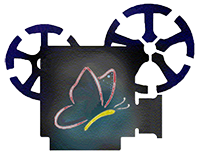

The parasitoids of butterflies belonging to the Hymenoptera are placed in three different super-families: Ichneumonoidea, Chalcidoidea and Platygastroidea.
The parasitoids of butterflies belonging to the Diptera are placed in one main family: Tachinidae.The larvae of the Ichneumonoidea are specialized in infecting caterpillars and pupae. Chalcidoidea can infect eggs, caterpillars or pupae (Universal Chalcidoidea).Tachinid flies only infect caterpillars, but sometimes the host is not killed until after it has pupated.None of these parasitoids ever attacks the adult stage of Lepidoptera.
- Order Hymenoptera
Superfamily Ichneumonoidea
Family Ichneumonidae
Family Braconidae
Superfamily Chalcidoidea
Family Chalcidiae
Family Pteromalidae
Family Trichogrammatidae
Family Encyrtidae
Family Eupelmidae
Family Eulophidae
Superfamily Platygastroidea
Family Scelionidae
- Order Diptera
Family Tachinidae
Family Bombyliidae
What is the difference between a parasite and a parasitoid?
It's not easy to give a good definition of parasitism because so many different species and different hosts are involved under very different circumstances and sometimes very complex structures with occasionally dire consequents for the host, but generally we can say: Parasitism is a non-mutual relationship between organisms of different species where one organism, the parasite, benefits at the expense of the other, the host. In many cases the parasites interact without endangering the host and without dramatically reducing the host's reproductive success. In a parasitoidal relationship the exploiting organism kills or sterilises the host, typically before it can produce offspring (Wikipedia).
For millions of years the adult female parasitoids have attacked the different stages of development of butterflies to become the food-source for their off-spring and have developed different strategies to find and infect their victims that would become the "host" for the developing larva.
Some parasitoids have very intimate relations with their hosts, in extreme cases being completely dependent on only one host species, while other parasitoids are more generalist and able to use a variable number of different species of butterflies and often other Lepidoptera, and in some cases also a wide range of host species belonging to different insect orders.
The parasitoids have become an important factor in regulating butterfly populations and therefore became an essential part of Biodiversity. When a caterpillar is infected by a parasitoid, in many cases, the parasitoid may change its behaviour. Parasitoids also utilize different methods to reduce or suspend the defensive immune response of the caterpillar. When the larvae of a parasitoid are fully grown they either leave their host for pupating or pupate within the host, after which they emerge and become free-living adults.
Parasitism is one of the key controlling elements for butterfly species. Even though parasitoids are frequently observed, their identification and the observation of their behaviour is a very complex and specialized science. There is still a lot to learn about the biology of parasitoids. The information about the interaction between parasitoids and their hosts can provide knowledge about the impact on butterfly populations. Unfortunately parasitoids have a bad name among lepidopterists and therefore little is done with field and rearing observations. It would be very helpful for entomological science if lepidopterists keep their reared parasitoids and make them available for identification by specialists. Any additional observations on oviposition, larval development etc. would be very welcome.
Mark R. Shaw (markshaw1945@gmail.com) is interested in hymenopterous parasitoids of butterflies and would like to hear from anyone who rears them (especially from the less commonly reared hosts), and will be happy to undertake determinations.
Hans-Peter Tschorsnig (hanspeter.tschorsnig@smns-bw.de) is interested in reared European tachinids and they can be sent to him for identification: Staatliches Museum für Naturkunde, Rosenstein 1, 70191 Stuttgart, Germany.